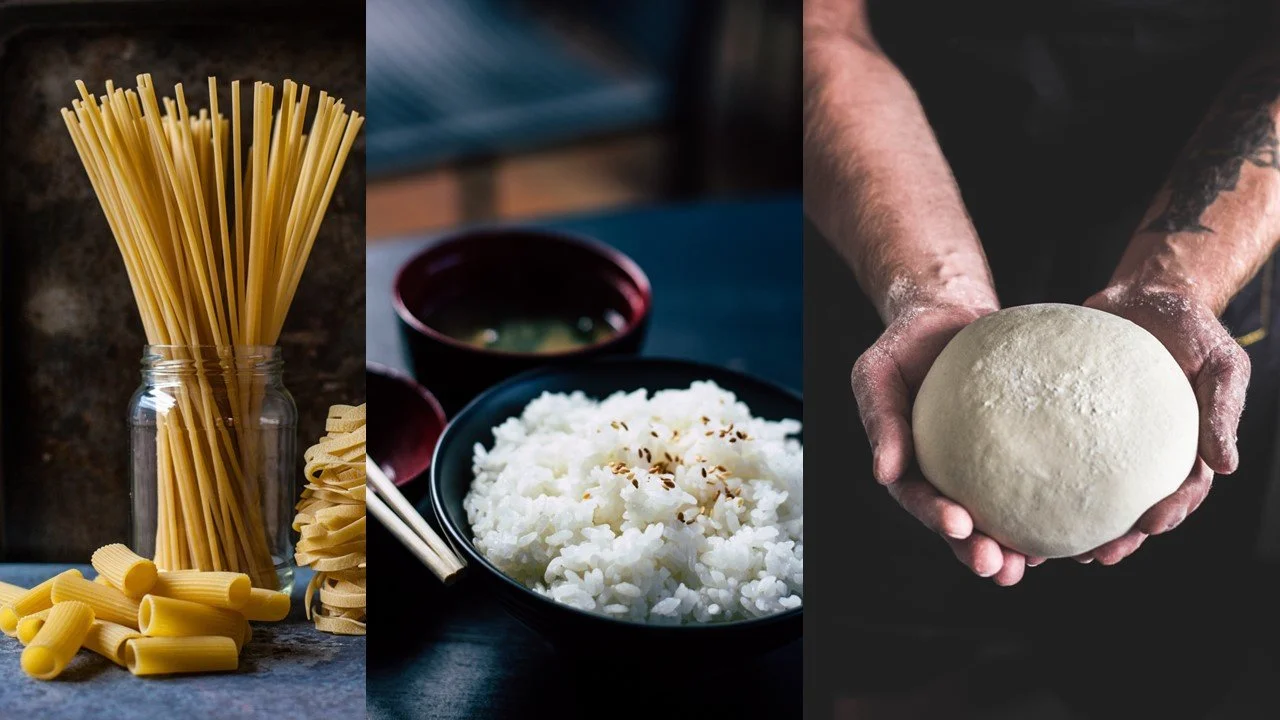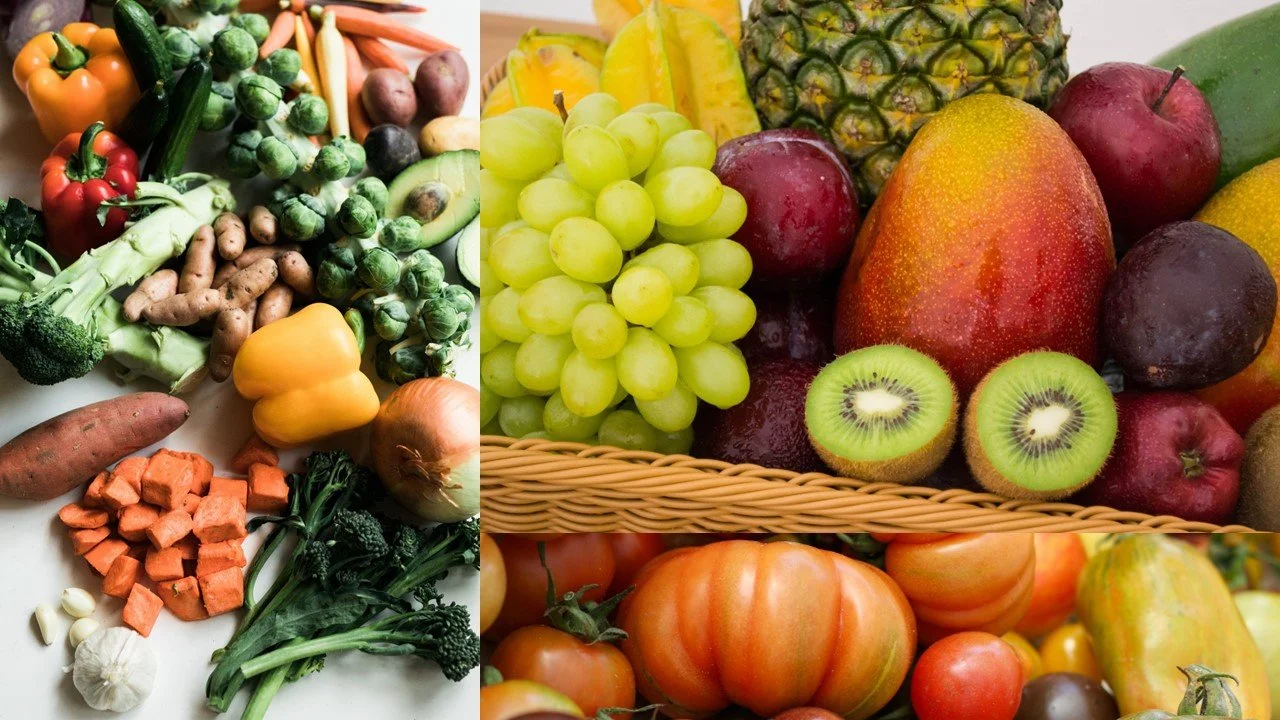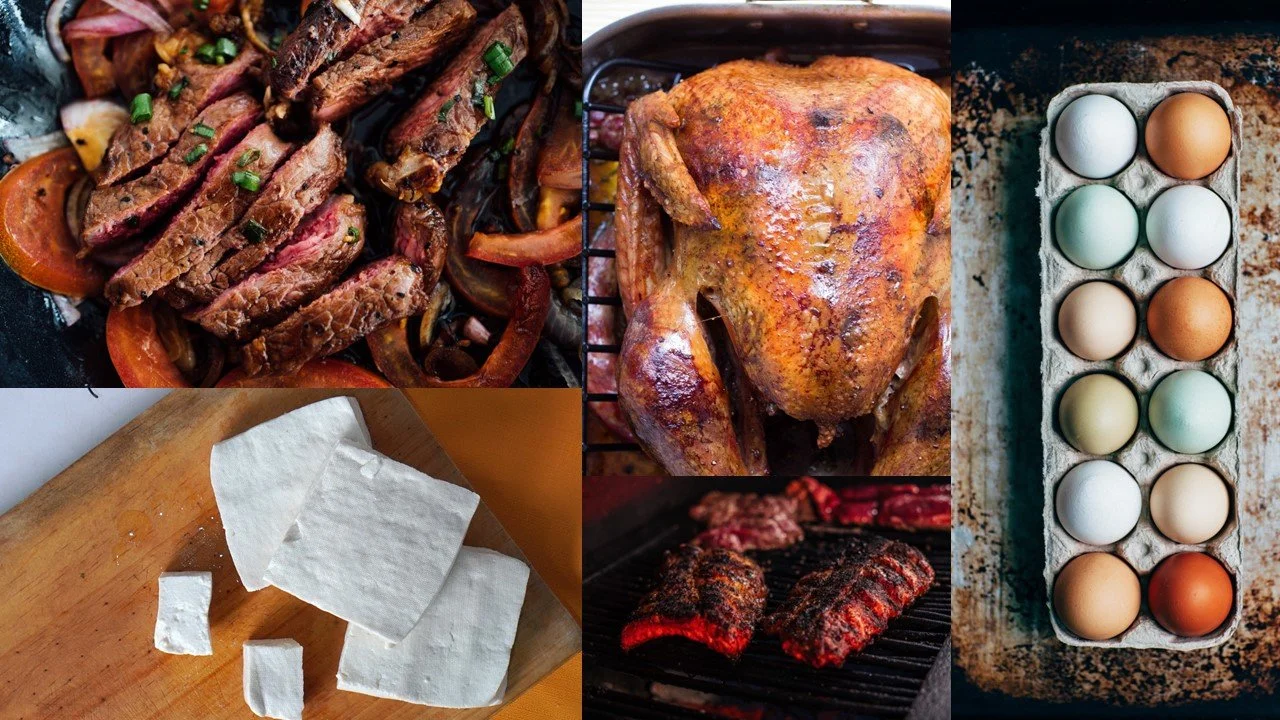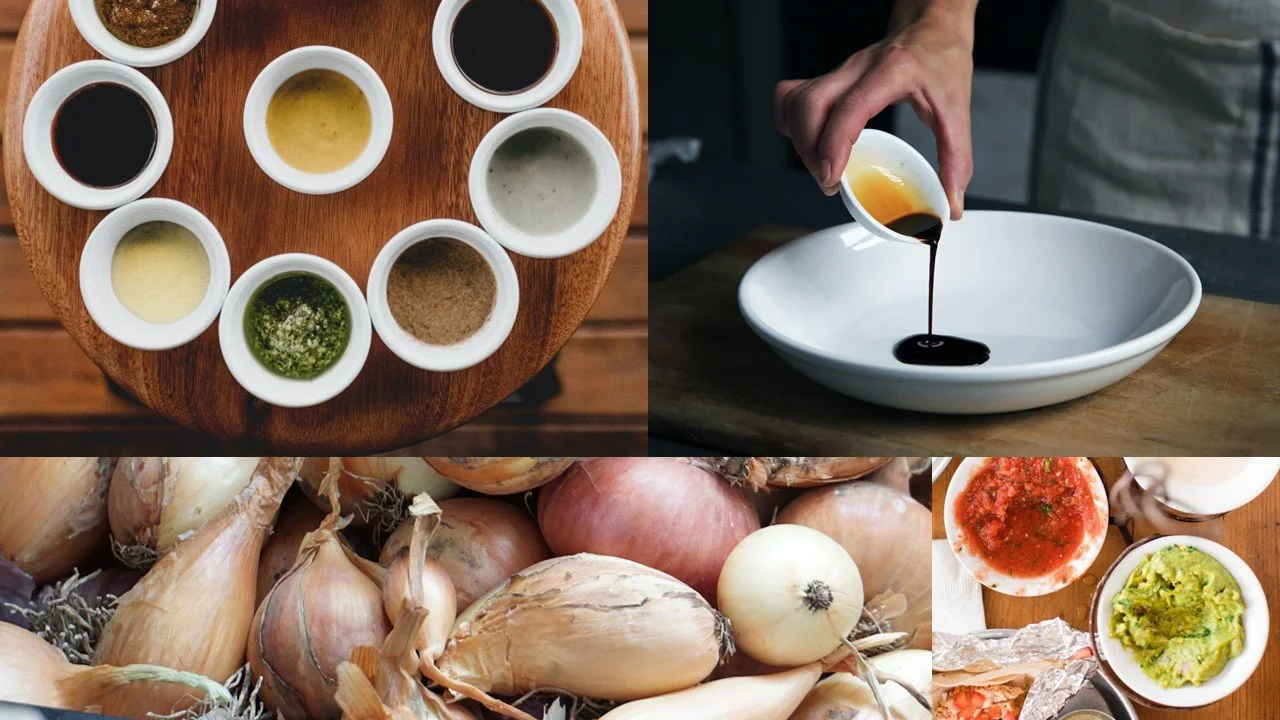What is Capsule Cooking?

Capsule cooking is a way of preparing meals which optimizes ease of preparation and flexibility.
It works by first breaking down your meals into four main components (Bases, Nutrients, Proteins, and Flavors). These components are then batch cooked and stored using methods that maximize efficiency and quality. Once your components are prepped, meals are as easy as picking one (or a few) items from each category and bringing them together. This method allows for many of the time-saving effects of meal prepping without the monotony of having the same meal every day.
The four components are: Bases, Nutrients, Proteins, and Flavors

Bases
Bases are the core of a meal and typically form the largest percentage of any finished dish. Some easy examples of bases are pasta and rice. These items form the center of a meal and drive the type of eating experience. Pork, beans, and salsa can create a great set of tacos to enjoy on a cool evening, a quick burrito to enjoy during lunch time, or a filling rice bowl to have at dinner.
Ingredients in this group are typically prepared the day of or a few days earlier. Bases do not typically freeze or store well and are usually quick to cook. Items that take longer can typically be purchased in prepared forms (i.e. canned beans) or can be par-cooked and frozen to allow for a quick final cook time.
The bases I typically use the most in my cooking are:
Rice, Pasta, Tortillas, Chickpeas, Salad Greens, Bread/Pizza Dough

Nutrients
The Nutrient category is exactly what you think it is: the healthy stuff. These are items like vegetables, mushrooms, and fruits which contain vitamins and other essential nutrients. This category is the most fluid and items here can float between a few different Capsules depending on the preparation method and the meal being made. I typically shoot for at least 25% of each meal to be made up of the Nutrient category.
These items can typically be added very easily to any dish and do not typically impart such strong flavors that they define the dish. They are also typically low in calories and can be used to bulk up meals. While Nutrients can alter the taste of a meal, it is rare that their presence will completely derail the stronger flavors provided by the Protein and Flavor categories.
The most common Nutrients I use are:
Broccoli, Cabbage, Collard Greens, Brussel Sprouts, Tomatoes, Mushrooms, Bell Peppers, Peas, Spinach, Fruits

Protein
The Protein category is another pretty straight forward one. This is going to be mainly meat and meat alternatives. The purpose of this category is exactly as implied and is focused on ensuring a meal has sufficient protein to support fitness and health goals. This category should be around 25% of your meals on average, but can be higher depending on physical activity.
This item is typically batch cooked on weekends and during spare time. Cheaper options in this category (Pork Shoulder, Roasts, Whole Chickens) will typically require longer prep times, but can be some of the more flavorful options. Other more expensive options (Steak, Fish, Seafood) are typically better prepared immediately before service and can be more finicky, although tools and techniques to simplify this process are available.
The most common Proteins I use are:
Pork Shoulder, Chuck Roast, Tofu, Seitan, Chicken Thigh

Flavors
Flavors are where the meal is defined. The same base set of ingredients can be made into several very different meals depending on which Flavors are used. The Gym-bro classic of Chicken, Broccoli and Rice can be made interesting over the course of a few days by switching the flavor from Teriyaki on one day, Barbecue sauce on another, and Thai Curry to finish the week.
Some of the typical flavors I use in my cooking are:
Barbecue Sauce, Curry, Teriyaki Sauce, Stir Fry Sauce, Spice Mixes like Lawry’s Seasoned Salt and Garam Masala
